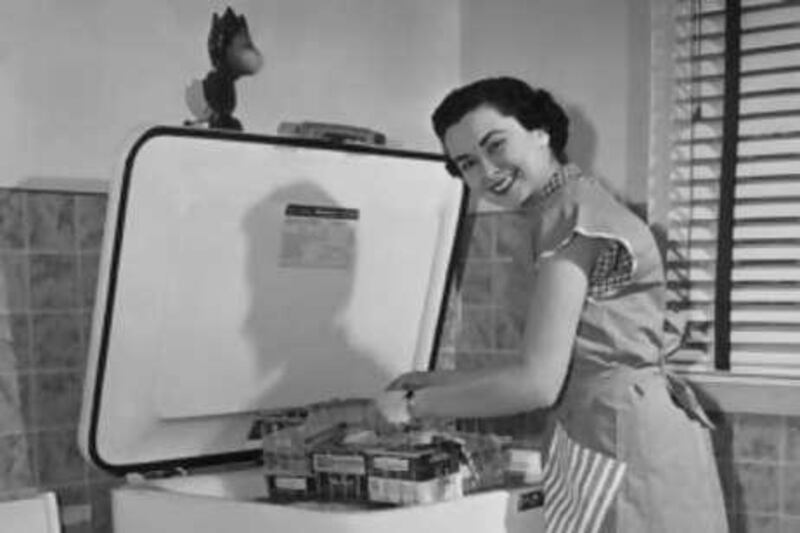I couldn't live without my freezer. Quite apart from the fact that it supplies ice for drinks, food goes off so quickly in the heat that it's often safer to freeze it if you're not going to eat it straight away. To keep your freezer working efficiently, open and close the door as little as possible and never leave it open for any length of time. The temperature should be at least -18°C. You can buy freezer thermometers (from kitchenware sections of supermarkets).
To store food for freezing, wrap it well. Use plastic containers, freezer bags, greaseproof paper or heavy-duty aluminium foil. Separate chops, steaks and fillets of fish and wrap in greaseproof paper then put in freezer bags. When freezing liquids, leave 2.5cm at the top to allow for expansion. Freeze small quantities of liquid in ice cube trays (useful for sauces, egg yolks and whites) then transfer the frozen cubes to freezer bags. Label the contents so you know what you have frozen and when.
Some food will not freeze satisfactorily. This includes salad vegetables and some fruit and other raw vegetables, including cucumber, tomatoes, celery, chicory, cabbage, potatoes, peppers and watermelon. You cannot freeze whole eggs (they will burst), milk-based sauces, mayonnaise, or most dairy produce such as yogurt, cream cheese and single cream. Double cream can be frozen, along with butter and some hard cheeses, such as parmesan.
Never refreeze thawed frozen food: the texture of the food will be spoiled and there is a danger of food poisoning. However, if the food is first cooked, then cooled, it can be refrozen. Most freezers these days are frost-free (ie they do not need defrosting), but if you have inherited an older model, you will need to defrost it a couple of times a year, or when a modest accumulation of ice has formed. Remove all the contents and throw out anything that is way out of date. Store the rest in coolboxes with ice packs.
Switch off and unplug the freezer. Remove any drawers or shelves and wash. Put thick bath towels in the bottom to soak up excess water and spread newspaper on the floor. Remove chunks of ice as they loosen but do not use sharp implements as you might pierce the shell. When all the ice has gone, wipe the interior with warm water and bicorbonate of soda (1tbsp to 1litre of water). Wipe the exterior with warm water and household detergent.
The Housewife's Handbook by Rachel Simhon (Bloomsbury) is available from www.Amazon.com





